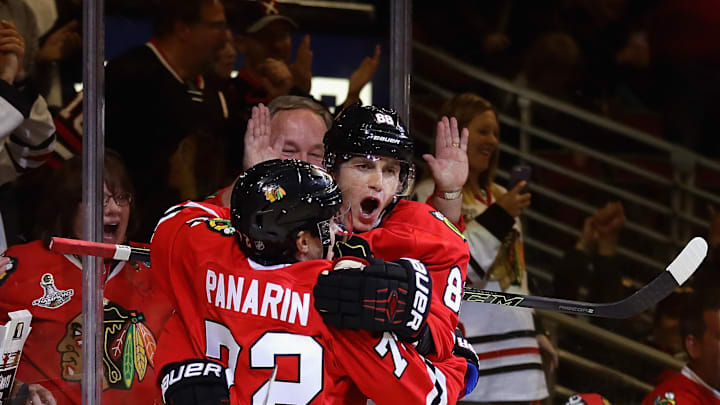Marc-André Fleury
How he was acquired: Traded from Vegas for Mikael Hakkarainen.
How he left: Traded to Minnesota for a conditional 2022 second-round pick.
What he did after leaving the Blackhawks: Bowman believed the Hawks could make a playoff push in 2021, so he made a move for the Pittsburgh icon. Fleury performed adequately behind a weak Chicago team and was moved to Minnesota at the 2022 Deadline. Petr Mrazek has been solid in goal this year, but Fleury keeps climbing up the career wins list.
Kevin Lankinen
How he was acquired: 2018 free-agent signing.
How he left: Free agency
What he did after leaving the Blackhawks: Lankinen struggled to demonstrate consistent play during his time in Chicago and signed with Nashville in 2022. He has been star Juuse Saros’ backup ever since. He would be a much better backup option right now than Arvid Soderblom.
Antti Raanta
How he was acquired: 2013 free-agent signing.
How he left: Traded to the New York Rangers for Ryan Haggerty.
What he did after leaving the Blackhawks: Raanta had a stellar career in Chicago but ultimately could not beat out Scott Darling for the backup job. The Hawks flipped him to the Rangers where he backed up Henrik Lundqvist for several years before becoming Arizona’s starter. He has spent the past three seasons in Carolina.
Looking over this roster, this is a very solid team.
The only true superstar upfront is Panarin, but the majority of NHL teams would love to have this level of forward depth. The backend is mediocre but has a plethora of defenders who could run a power play. The goaltending is a bit shaky, given the trio’s subpar play this year, but the offensive talent would more than makeup for its shortcomings.
As a Hawks fan, it is painful to imagine this is what the team could look like right now, but hindsight is always 20/20. If Bedard and Co. can bring a Stanley Cup or two to Chicago in the next 15 years, the pain will be worth the reward.
